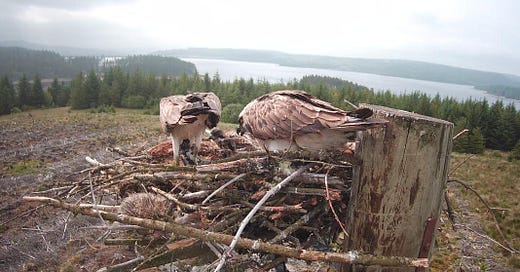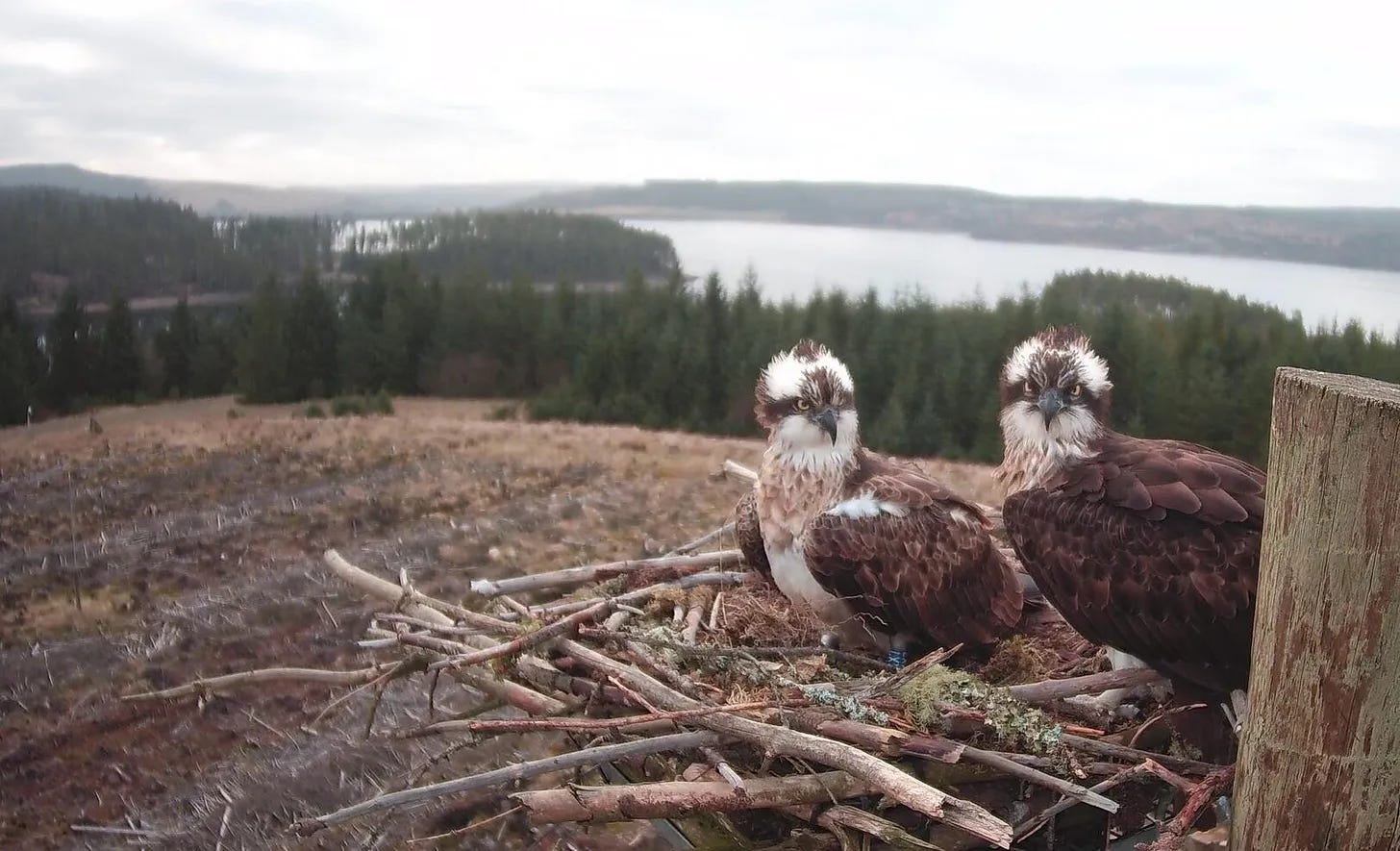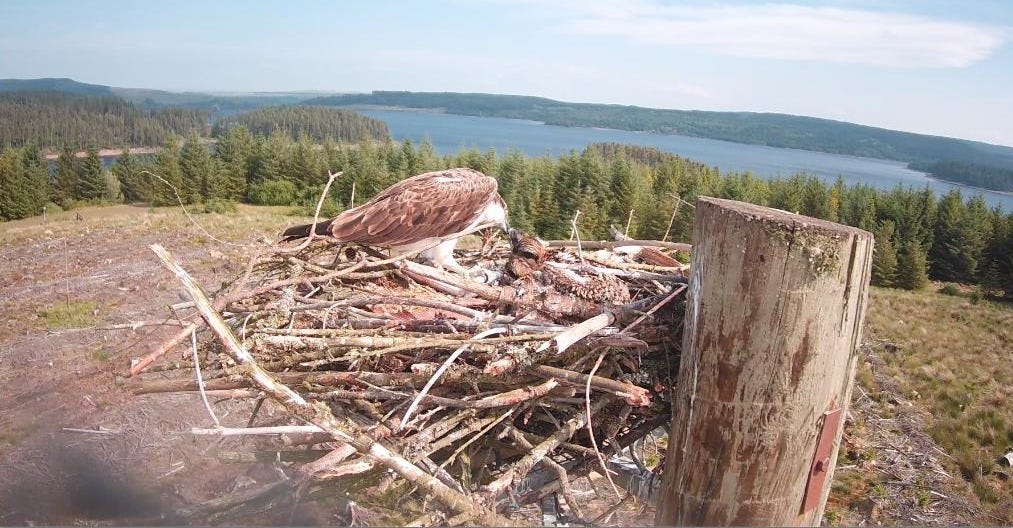£30k appeal takes flight to save Northumberland’s ospreys
Cash plea to support Northumberland’s osprey nesting colony. Tony Henderson reports
A funding appeal has been launched with a £30,000 goal to support Northumberland’s osprey nesting colony.
So far this year there are five productive nests at Kielder Forest with 11 chicks and probably more hatchings to come.
Forestry England, which across several seasons has provided artificial nesting platforms on eight-metre-tall poles, has joined British Airways in setting up a Crowdfunder appeal which runs until August 6.
The initial aim is to raise £15,000, but BA has pledged to double any donations, meaning that the total could reach £30,000.
The funds will go towards the costs of Osprey Watch, where on Wednesdays, Saturdays, and Sundays the public can visit a cabin at Tower Knowe on the Kielder lakeside to observe the ospreys.
A camera trained on the nest 7 family of three youngsters and their parents KM18 and KX7 sends images to Tower Knowe and Kielder Castle. Another camera on nest 1A’s chicks also transmits to the castle.
The appeal will also help with the substantial costs of erecting poles and providing and maintaining cameras.
“It is an expensive and difficult task to erect the poles and cameras,” said Kielder osprey observer Joanna Dailey.
A BA spokesperson said: “In Kielder Forest, something extraordinary is happening. After a 200-year absence, ospreys returned to raise their young in one of the wildest corners of England.
“Thanks to our livestream nest camera, people can watch their daily lives unfold — from egg-laying to hatching, feeding, and the first flight of each chick. It’s a rare and moving glimpse into wild family life.
“Once found throughout the UK, ospreys were persecuted and the species became extinct in England in 1847. However, in 2009, ospreys were born in Kielder Forest, and since then, 124 ospreys have successfully fledged.
“Despite this success, their incredible story remains fragile. Kielder’s ospreys face real challenges; harsh weather, migration risks and predators threaten their recovery. In 2024, more than half the chicks died during very poor weather in June.
“But there is hope. Support this amazing project and your donation will be doubled. Donate today and be part of this incredible wildlife story.”
“Every donation — big or small — helps to protect an unfolding drama of new life, hope, and wild beauty.”
BA says a gift of £10 will help improve equipment to livestream the ospreys’ lives; £25 will help install new poles and nesting platforms; £50 will help invest in nest cameras that will deliver new wildlife insights.
The oldest chicks are on nests 7 and 1A and Joanna said: “The females on both nests have been taking advantage of slightly greater freedom, now constant brooding isn't required. They have both come back from a bathe most days.
“KM18 is a good fisherman, sometimes leaving the nest and returning with a large rainbow trout within 10 minutes.
“The number of feeds in the 12.5-hour streaming period has varied. Often the chicks have several hours with no food - usually in the middle of the day. But when a fish did arrive, all three were immediately on hand to devour it.
“The younger chicks at Nest 1A are generally being well provisioned, but there was a nine-hour gap between the end of one fish and the next delivery. Tempers got frayed in the heat, but they were all good friends again when meals resumed.”
BA is working with other partners in the osprey project, including Kielder Water and Forest Park Development Trust, Northumberland Wildlife Trust, Northumbrian Water, Calvert Kielder and Kielder Water.







